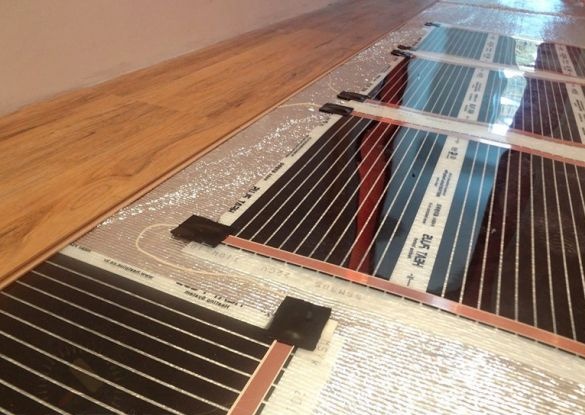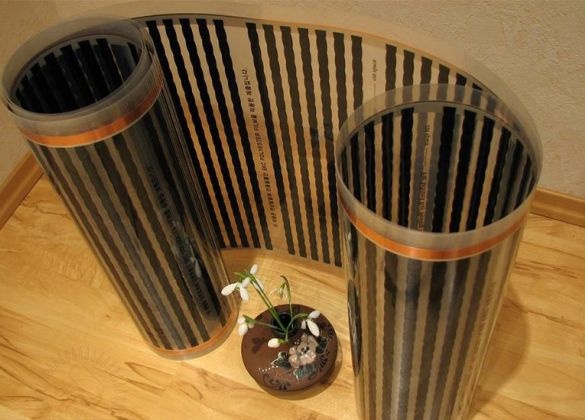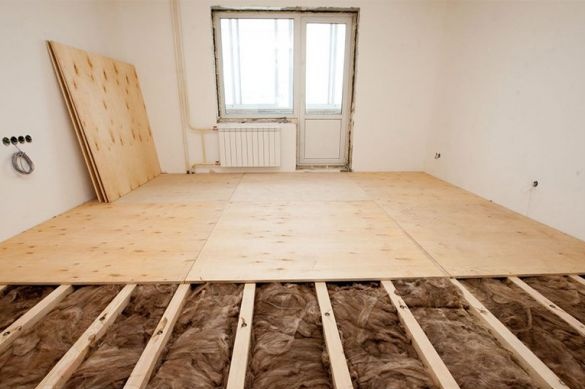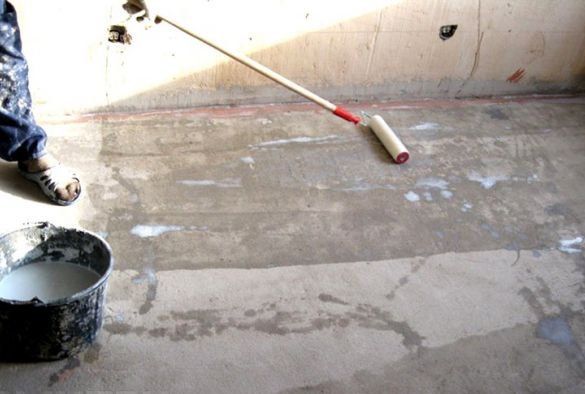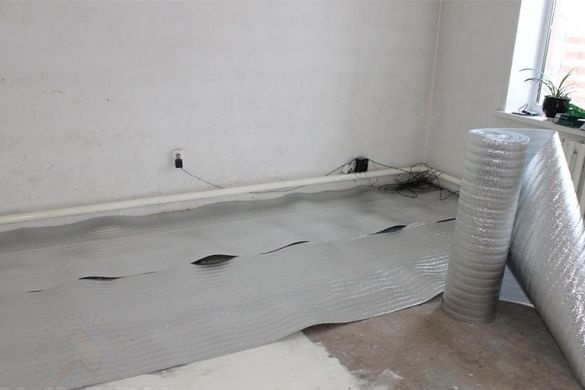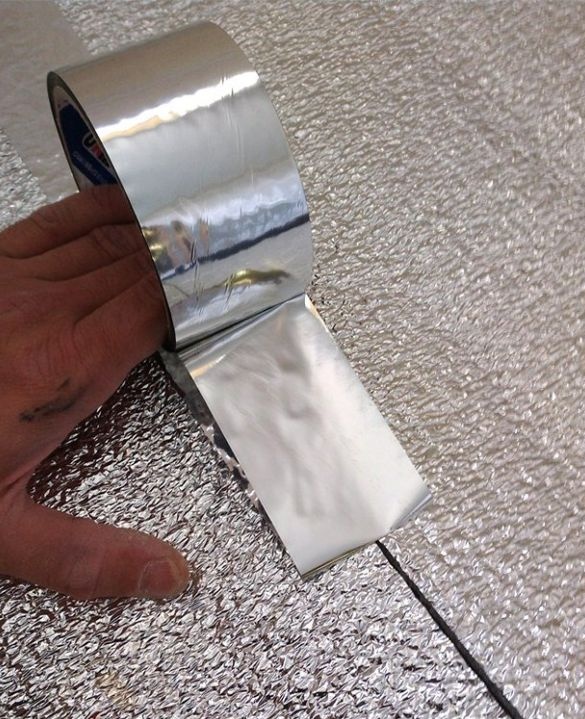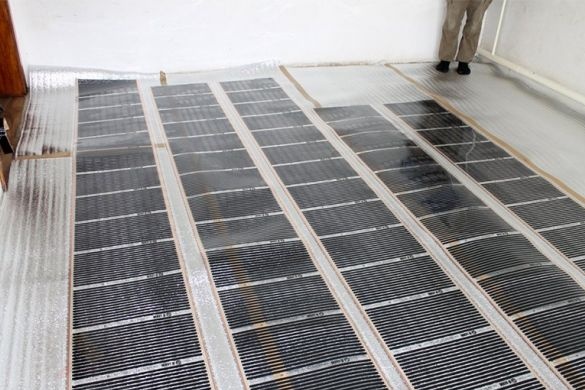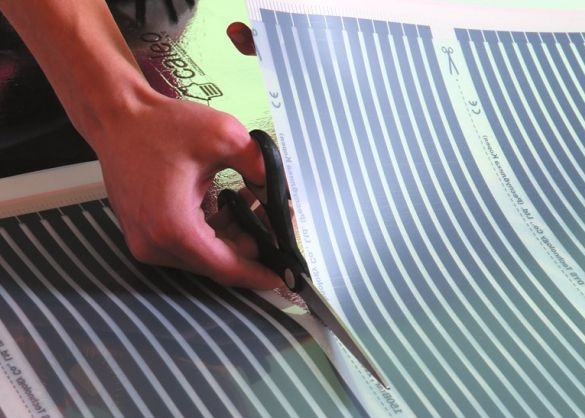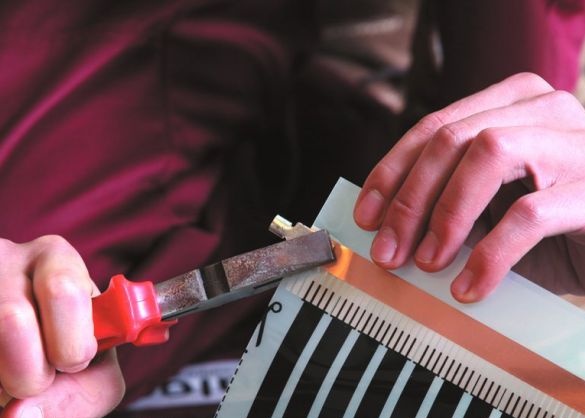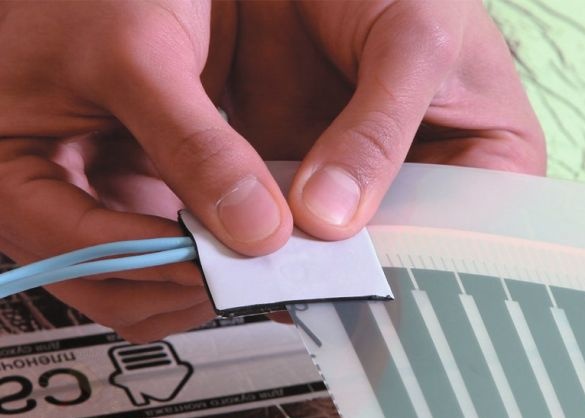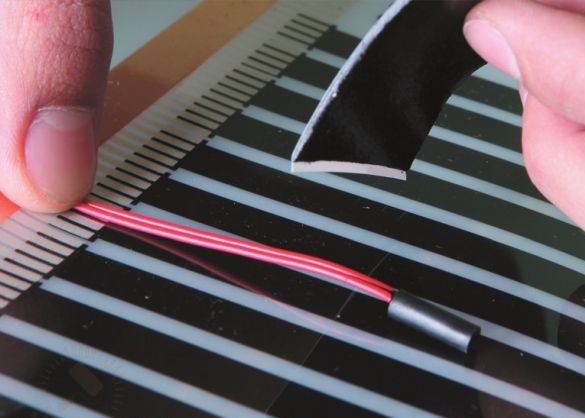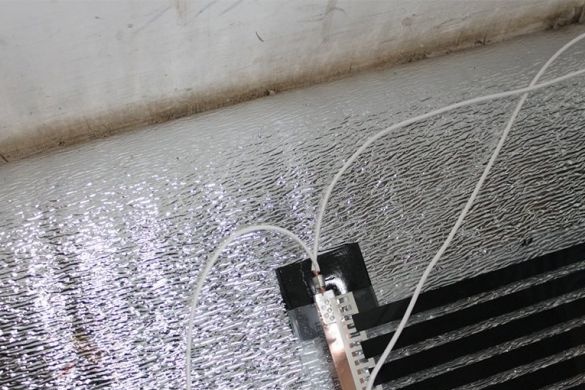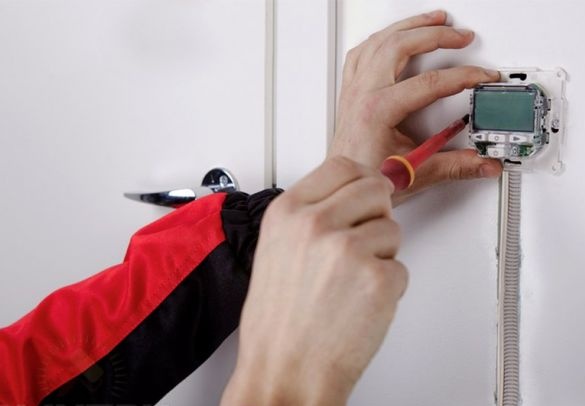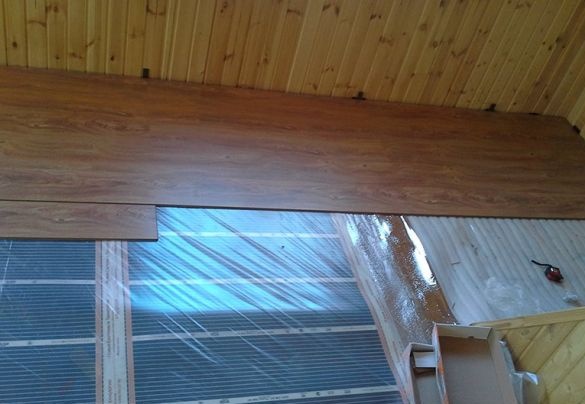It is always comfortable with a warm floor, but not every master decides to install a heating system do it yourself. If you chose a laminate or linoleum as a floor covering, study this article, where we will talk about a simple way to heat a floor with infrared films.
What are the features of the use of infrared film
With a reasonable approach and understanding of the technical qualities of the film, it can even be used as the only heating method. And yet, IR film is most widely used for arranging comfortable zones in the interior: floor heating in bathrooms, children's rooms and places for games, on loggias. At the same time, the heating element does not steal height and does not require changes in the construction project, with the exception of its electrical part.
Like all innovative technologies, IR film is subject to harsh criticism, both constructive and completely meaningless. The film floor, like any other heating system, has a strictly defined scope. All sorts of myths about the inefficiency and insecurity of the film appear as a result of its improper use or violations of the installation rules.
Subfloor preparation
You can use infrared film as the main heating system only if there are two layers of thermal insulation - the main and the shielding. The optimal floor design in such cases is a dry screed and flooring on the logs with filling the voids with stone wool. Concrete floors can be covered with an insulating polyurethane substrate: slabs or sprayed.
If it is not possible to raise the floor height by 5–8 cm, IR films cannot be the main source of heat in the house and are used only for comfortable heating of floor coverings, including locally.
The nodes adjoining the subfloor to the walls must be filled with polyurethane foam to eliminate convection, the cracks between the floor slabs should be filled with cement mortar. Then the floor surface must be cleaned with a vacuum cleaner and prevent further dust formation - primed.
Heat Shield Rules
The shielding layer reflects heat rays and reduces heat transfer to the subfloor by 70–80%.The material for the device of this layer is the lavsan substrate, it is preferable to use products of the same brand as the film. That is, it is better to purchase not only heating elements, but also a heat and electrical insulation system.
It is allowed to use cheaper foamed polyethylene with a metallized film, but this is absolutely irrational. A cheap insulator has too high thermal conductivity, which reduces useful power. Payment for increased energy consumption during the year is equivalent to the cost of high-quality insulating materials.
The device of the shielding substrate is necessary not only in those places where the heating circuit will be laid, but also over the entire area of the room in order to exclude a height difference. Lavsan substrate also serves as a replacement for conventional shock-absorbing, laid under the laminate.
The substrate is produced in sheets or rolls and forms joints when laid. They must be glued with a special adhesive tape, which can be replaced with aluminum with a polished surface. To increase electrical and fire safety, metallized surfaces are connected by strips of aluminum foil and the surface is connected to a protective conductor to enable the circuit to be switched on through a differential machine.
Heat film laying
The heating circuit must be calculated in advance, taking into account the bypass of the cabinet of furniture, bathtubs and non-visited areas. At the same time, laying of the film under the kitchen set and furniture on the remote legs is allowed.
Lay the film on a substrate in rows, observing the recommended distance from the walls of 30-200 mm. When laying the film, it is allowed to cut across, if the remaining rolls are not enough in length, the film can be grown, while maintaining a gap of 20 mm at the junction.
The film is powered by two single-core stranded wires in non-combustible insulation. The connection is made with piercing clamps: first, the wire is crimped with pliers in the shank, then the jaws are applied to the metal of the contact pad and squeezed.
The wire connections and open sections of the contact bars are insulated with adhesive bitumen film on both sides.
The temperature sensor is installed under the film anywhere. In places of installation of the sensor, isolation of contacts and ends of the film, small sections are cut out in the dacron substrate and the protruding elements are hidden in them. All wires are also laid in the grooves cut by the knife, after which the surface is glued with transparent tape. They connect the joints of the film to avoid shear.
Heating elements must be protected from abrasion with plastic wrap. It is even better to use a special grounding substrate for this, which scatters the electromagnetic radiation of the floor and serves as the upper contact base for more correct operation of the differential switch.
Electrical connection
It is not recommended to lay whole strips of film longer than 10 m and connected loops longer than 7 m. The average electrical power of any film on a 1 m2 plot is 200–240 W, which roughly corresponds to a current of 1 A. This greatly simplifies the calculation of the power of the entire system and schemes for its connection, as well as the choice of thermostat and protective devices. The conductive strips of the film are designed for a current of not more than 10 A, while the presence of contact connections reduces the loop throughput to 7 A.
Exceeding the specified load standards is not allowed. All blocks must be connected by separate wires coming from the film on the floor to the thermostat, or, in extreme cases, to the junction box available for maintenance.
Thus, it is allowed to use thinner PV-3 1x1.5 wires for connection, which at a load of up to 10 A will not heat up at all and will last for a long time. To power the temperature controller, a VVGng cable is used with a core section corresponding to the total power of the controlled zone. If the total power exceeds the permissible current of the contact group of the thermostat, the switching is output to the magnetic starter without self-pickup.
After the installation is completed, it is necessary to turn on the warm floor and check the operability of each section, and if necessary, calibrate the sensor readings. After that, you can mount the thermostat in place and proceed with the installation of the flooring.
Flooring device
Laminate can be laid directly on the protective film by standard methods.
Under linoleum, it is necessary to equip the leveling layer of 8 mm plates of moisture-proof plywood. To fix plywood sheets without damaging the film, technological gaps between the heating elements and the film field should be used. The plates are laid indented between them and from the walls at least 10 mm, the joints are filled with silicone sealant. After drying, the surface should be cleaned with a vacuum cleaner and primed, after which you can proceed with laying the flooring.

